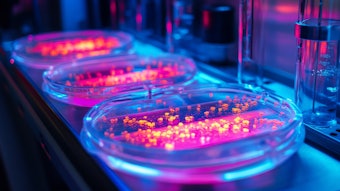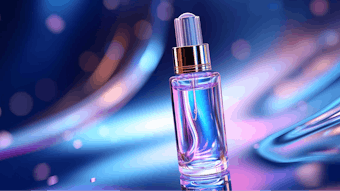Rising oil costs have sent fuel prices soaring in the United States, causing consumers to cut down on travel and in some cases, seek alternate transportation. While consumers have explored means to save at the pump, scientists have explored processes at the bench to develop alternative fuel sources. The race to develop alternatives to petroleum began not only to save consumers money, but also to save the environment.
And as they say, “What’s good for the SUV is good for the SC (stratum corneum).” All joking aside, some of the raw material sources for alternative fuels also are sourced for the production of personal care ingredients. Palm oil, extracted from palm tree fruit, is used in both bio-diesel fuel and personal care products.
Due to biodiesel demand, the price of palm oil has risen. Additionally, the deforestation of palm trees has turned many personal care companies away from using palm oil for environmental reasons.
In exploring alternatives, Geoffrey Brooks of Solazyme believes that he and his team of scientists have developed a cost-efficient and environmentally friendly process to turn algae into both a biodiesel and a personal care ingredient.
Why Algae?
Algae are a large and diverse group of simple organisms that range from unicellular to multicellular. Like land plants, they are photosynthetic and therefore produce oxygen. While they lack some organs found in land plants, it is this simplicity that makes them useful. “Algae have evolved a sophisticated series of mechanisms that make them adaptable to different environments,” explained Brooks. “Because they live in a marine environment, they are adaptable to different depths and levels of sun exposure.”
Algae also communicate with each other—a beneficial element for protection, according to Brooks. “A high cell count allows the algae to communicate. It allows what is happening on the outside to be communicated to the inside.” Therefore, if environmental conditions change where the algae are located, they will adapt as necessary.
Brooks and his team recognized that algae are naturally oily and therefore decided to explore possible uses for the plant’s oil.
Harvesting Algae
While it can take anywhere from 10–160 million years to produce petroleum, algae oil can be produced in a matter of days. “Rather than waiting several millions of years for [algae oil] to naturally occur, [our company is] producing the oil directly and right away,” said Brooks.
The company has found that the most effective and economically responsible process to produce the oil is through biofermentation. The company calls the process phytoponics. “Basically, like hydroponics, the algae is grown in water,” said Brooks. His company has developed a process to produce large quantities of the algae in biofermenters. Through the phytoponic process, a mineral-rich solution is used to grow a small amount of algae in a biofermenter into a large quantity.
According to Brooks, the algae eat carbon in the solution and convert it into the oil. In about five days the algae can be harvested, at which time the oil is extracted and converted to biodiesel or a cosmetic raw material.
Algae in Skin Care
Algae have many benefits for skin care, according to Brooks. “They help to improve the skin’s lipid barriers and have a high carotenoid content.” Specifically, the algae oil harvested by the company reportedly contains hundreds of different carotenoid types.
The polysaccharide content of the algae oil also has specific benefits in skin care. “The oils have beautifying and moisturizing properties but the unique polysaccharide content delivers wrinkle benefits and softens the skin,” said Brooks. “They have been shown to plump the surface of the skin and to produce collagen and elastin. [Algae] also protect the skin from DNA damage through their unique biofilm, reducing the post-UV TT dimer formation.”
The company has an extensive algal library and according to Brooks, the oil is 100% active. Before the algae oil can be used in cosmetics, however, it must be combined with methyl ester through a transesterification process.
A main focus for the company is that its phytoponic process is environmentally friendly or as Brooks puts it, has a “small environmental footprint.” Crude oil is becoming expensive and palm oil being diverted for biofuel production leaves little crop for other industries.
This phytoponic process to produce algae oil is renewable and sustainable, offering an attractive solution. “We can produce huge quantities with limited land water mass,” said Brooks. The company harvests only a small amount of algae and yet can produce large quantities in a renewable way, thereby maintaining the crucial algae balance in marine environments and avoiding aquatic life disruption.
Aside from benefits in skin care, the algae oil offers applications in other industries such as food and beverage, and its lubricity can be used to make cars run smoothly.










